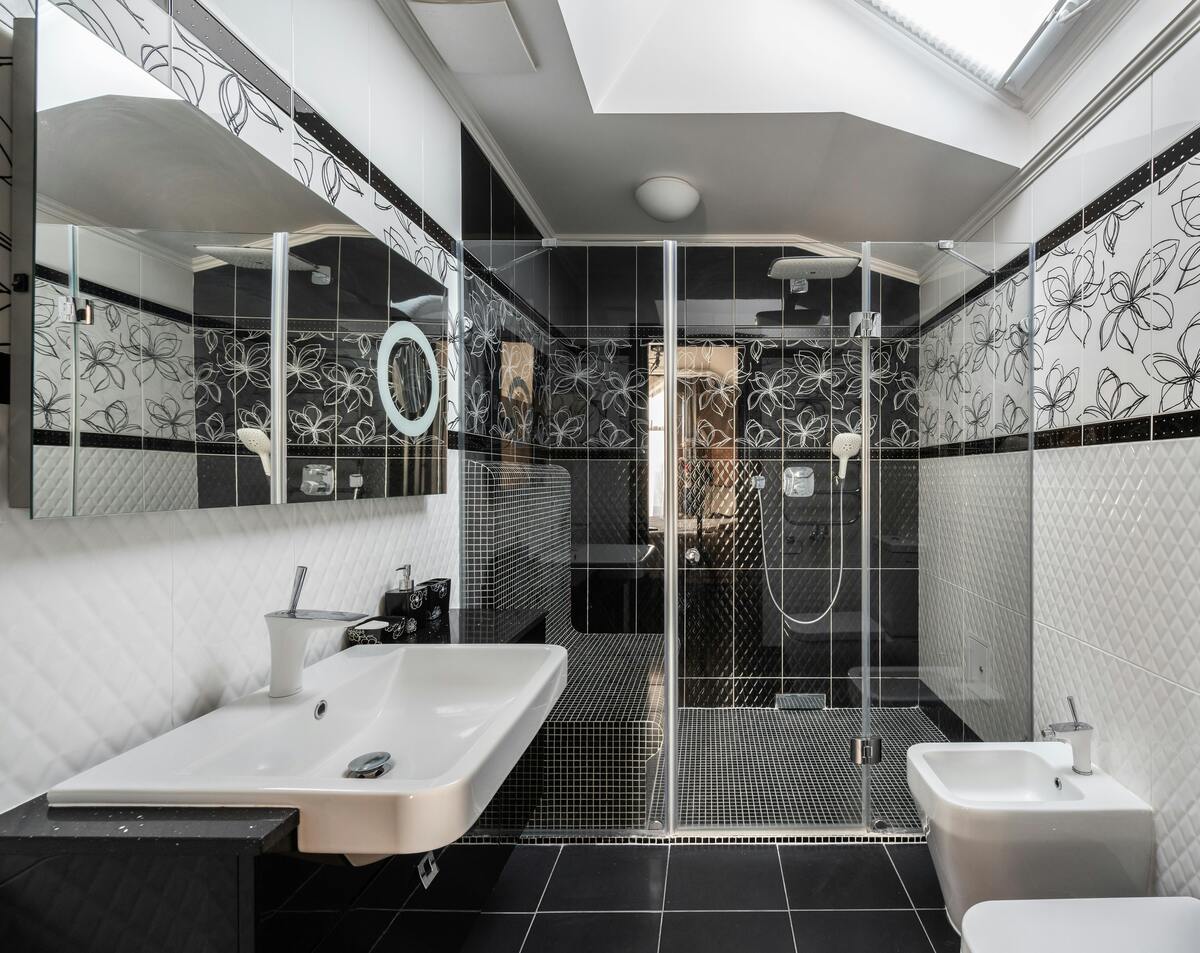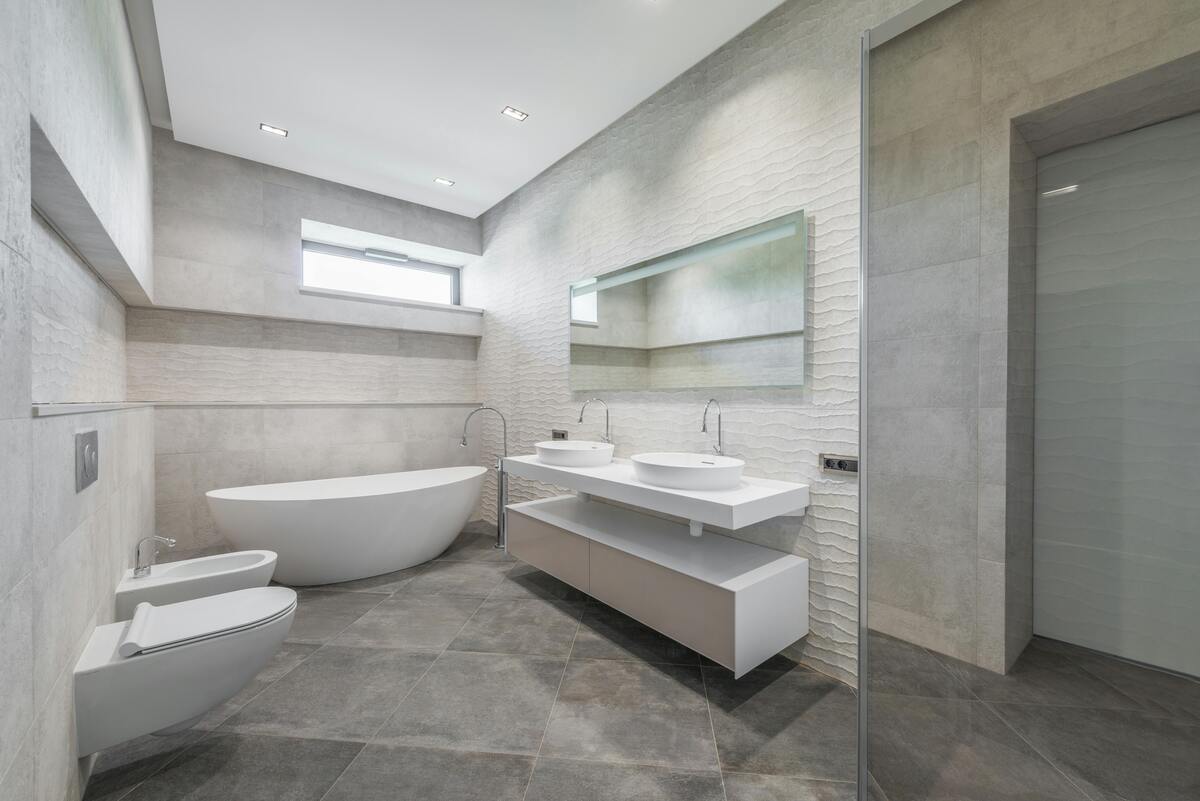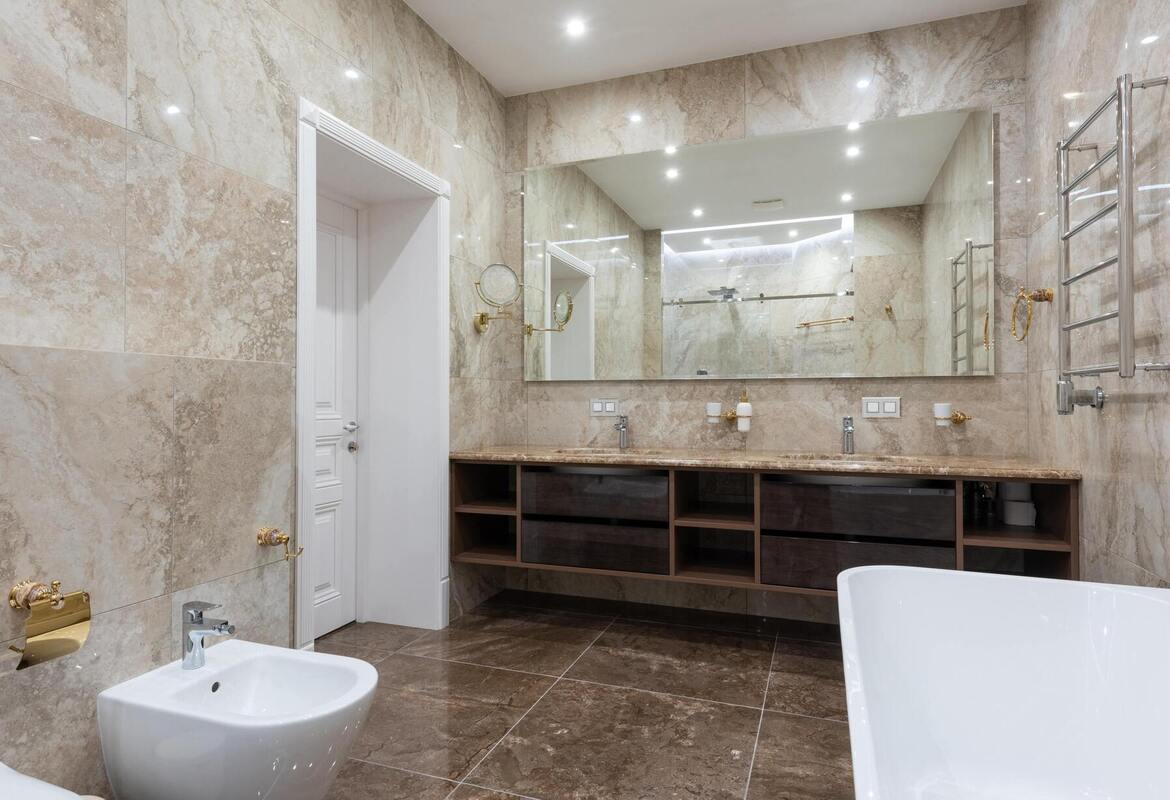Bathroom Plants That Absorb Moisture: Our Guide

Humid bathrooms are the ideal environment for all moisture absorbing plants. Plants in the bathroom don’t just add nature to it, but they’re also a way to regulate humidity.
Some plants attract and then absorb the moisture from the air, thereby reducing humidity and avoiding the build up of mould or mildew.
Some plants can reportedly remove as much as 78% of airborne mould – for example, English ivy.
Bathroom plants add moisture absorbing pH in the atmosphere and create a fresh and serene environment.
Why choose moisture absorbing plants?
Moisture from showers, baths and general water use are a problem in every bathroom.
Unpleasant conditions of condensation and mould result from high humidity. A natural solution to this problem is simply to introduce moisture absorbing plants.
These plants not only take in the moisture from the air, but they also bring a bit of calm and vibrancy to the room.
Generally, plants that are easy to maintain usually do well when grown in moist environments, as they usually thrive in humid environments. If taken care of, they can grow and keep your bathroom fresh along with reducing extra moisture.
Best bathroom plants that absorb moisture
Several plants do well in a bathroom because they can take up moisture in the air to counterbalance the humidity.
Not only are these plants good for moisture, but they also can improve air quality, making them great for bathrooms.
Whether you’re looking for traditional bathroom ideas or downstairs toilet ideas for decoration and absorbing moisture, these plants offer great value:
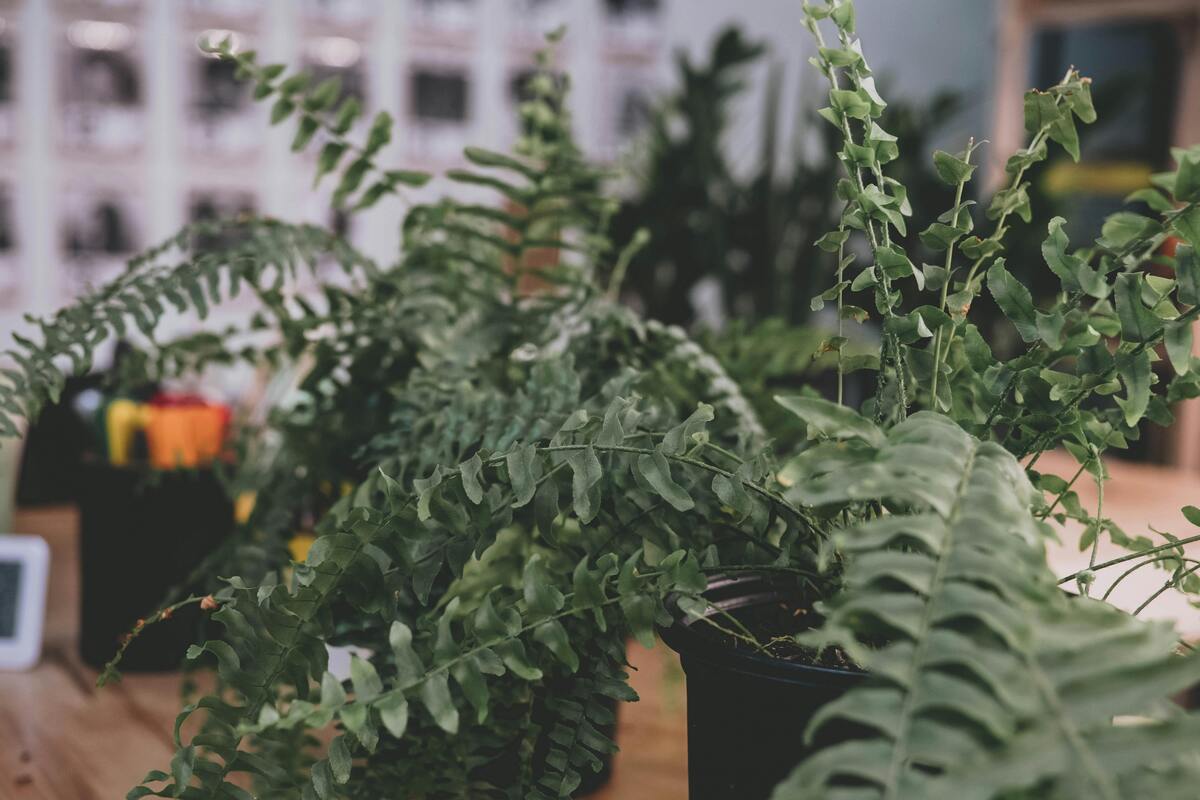
Boston Fern (Nephrolepis exaltata)
These are some of the most effective plants when it comes to absorbing moisture.
- Its lush green fronds thrive in high humidity and can soak up excess moisture from the bathroom environment.
- Native to tropical regions, the Boston Fern enjoys indirect sunlight and moist soil, making it an ideal plant for bathroom window sills or corners.
- This plant does require regular watering and misting to maintain its health, but its ability to remove moisture from the air makes it worth the effort.
Boston Ferns are particularly useful in bathrooms where ventilation is limited, as they help reduce condensation and create a fresher atmosphere.
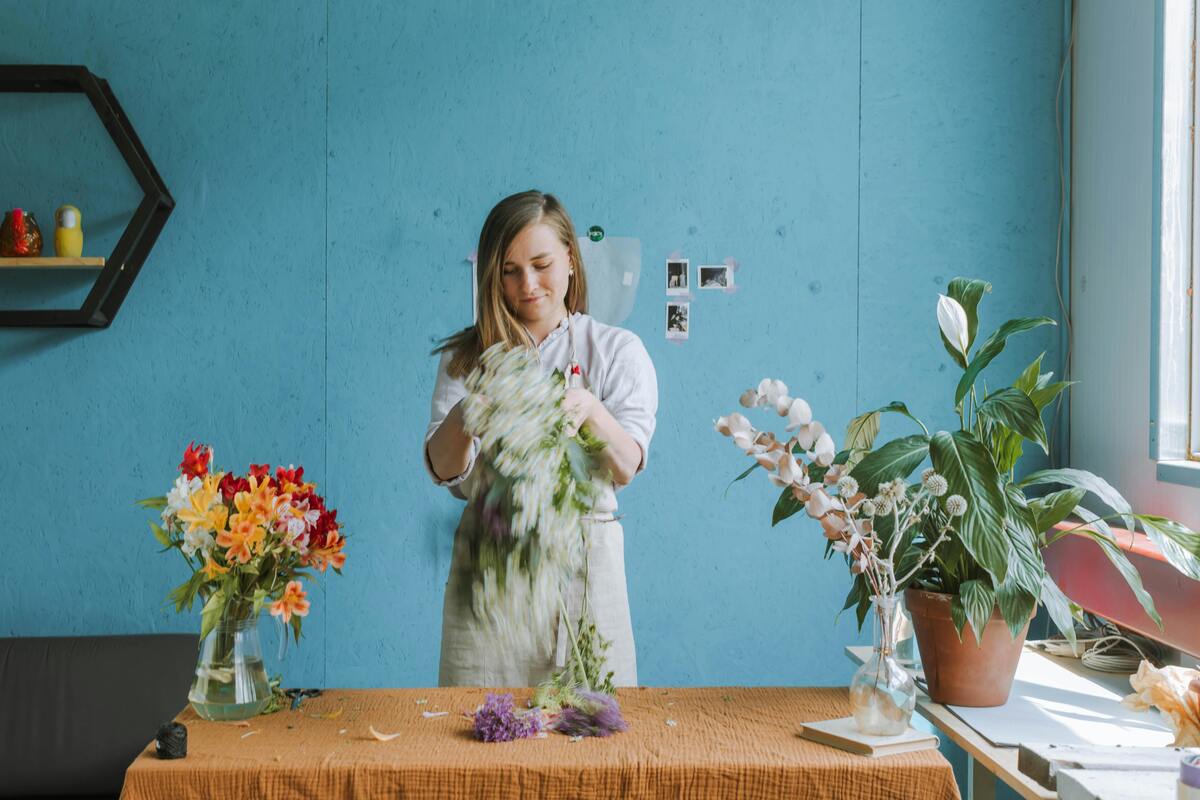
Peace Lily (Spathiphyllum)
Known for its striking white flowers and dark green leaves, the Peace Lily is another excellent choice for bathrooms.
- Peace Lilies thrive in low-light conditions and love humid environments, making them perfect for bathrooms with minimal natural light.
- They are known for absorbing moisture through their leaves, which helps regulate humidity in the bathroom.
- Peace Lilies are also praised for their air-purifying qualities. They remove toxins such as ammonia and formaldehyde from the air, further enhancing the freshness of your bathroom.
With regular watering, the Peace Lily can remain healthy and continue to absorb moisture from the air.

English Ivy (Hedera helix)
English Ivy is a versatile plant that can absorb moisture effectively, making it a great addition to bathrooms.
- Its trailing vines add a natural touch to the space, and it thrives in both bright and low-light environments.
- The plant’s leaves draw moisture from the air, which helps control bathroom humidity levels.
- English Ivy is also excellent at filtering airborne mould, a common issue in bathrooms.
Hanging the plant in a pot near the shower or letting it cascade from a shelf will enhance its moisture-absorbing properties while adding aesthetic appeal.
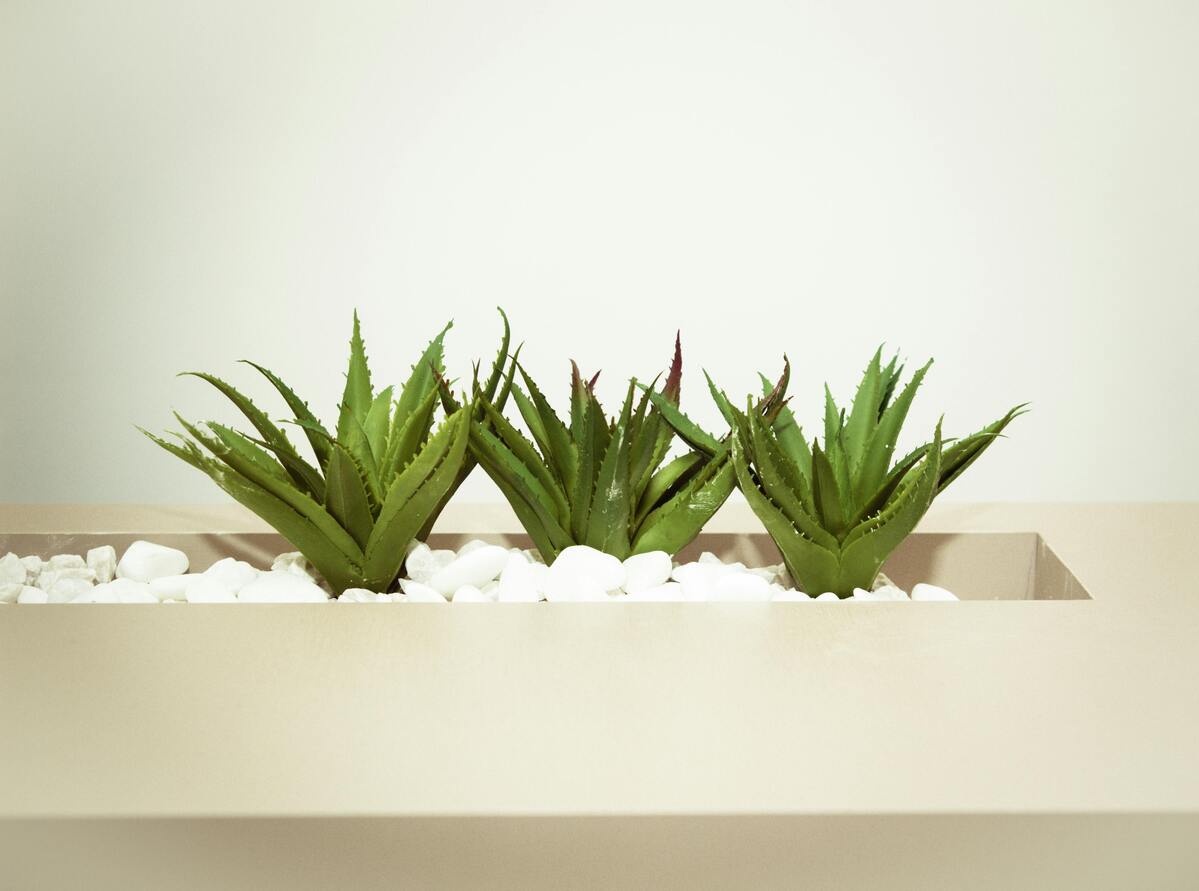
Aloe Vera
Although more famous for its soothing gel, Aloe Vera is also an excellent plant for soaking up moisture.
- A well lit bathroom is one place this succulent plant can grow best and it does not need frequent watering, making it a low maintenance.
- Because of its thick leaves, Aloe Vera also absorbs moisture from the air and is therefore well suited to the warm, humid conditions of a bathroom.
On top of that, you can use the gel inside the leaves for minor burns.
Bamboo Palm (Chamaedorea seifrizii)
Another plant that likes high humidity is the Bamboo Palm. They’re tall and tufty, and are excellent at absorbing extra moisture.
Besides its moisture absorbing qualities, Bamboo Palm also helps purify toxins from the air, making air quality in your bathroom better.
It’s a plant that’s easy to care for, except for watering, as it needs a lot of water, but it remains a popular choice for bathrooms.
How to care for moisture absorbing plants
To get the best from your moisture absorbing plants, it’s important to understand their needs. While these plants thrive in humid conditions, they also require regular care to keep them healthy and effective.
- Light: Most moisture-absorbing plants prefer indirect light. Bright, direct sunlight can scorch their leaves, especially in the bathroom where the humidity can intensify the sun’s effects. If your bathroom doesn’t have natural light, consider using grow lights to support the plants’ growth.
- Watering: While these plants love moisture in the air, they still need regular watering. Overwatering can lead to root rot, so it’s essential to find the right balance. Many moisture-absorbing plants, such as the Boston Fern or Peace Lily, also benefit from misting their leaves.
- Humidity: High humidity levels are essential for these plants to thrive. While they naturally absorb moisture, placing them in particularly dry areas might limit their effectiveness. Bathrooms with frequent use of showers and baths will generally provide enough moisture for these plants to flourish.
- Potting: Use well-draining soil and pots with drainage holes to avoid water logging the plants.
Sometimes overlooked, the right pot ensures that plants can absorb moisture from the air without becoming waterlogged from their roots.
If in doubt, ask an expert. In this guide – what are the benefits of hiring a bathroom designer? – we reveal how experts can advise on every aspect of bathroom design.
The benefits of bathroom plants that absorb moisture
But moisture absorbing plants do more than helping to regulate humidity levels in the bathroom environment.
Plants not only increase the amount of oxygen produced in your home but also absorb toxins. This helps create a healthier environment, especially in places such as bathrooms where ventilation may not be possible.
Your bathroom will also be more relaxing and tranquil as plants help give it a calming effect. They can also help you lower stress, create a sense of wellbeing, and your bathroom can start to feel like a personal retreat.
Also, these plants reduce moisture levels in the bathroom therefore they prevent the growth of moulds and mildews.
Because of this, mould thrives in damp environments, and keeping humidity low can help to make your plants a part of a cleaner, healthier bathroom space.
Want to know how to choose the perfect shower for your bathroom? Read our bathroom shower installation guide.
Creating the perfect plant-friendly bathroom
Creating an environment that allows for your bathroom plants to thrive will get you the most out of your plants.
First, you need to determine which areas of your bathroom are the areas that get the most indirect light. Which is going to be the better location for most moisture absorbing plants for bathrooms?
Use your empty space, place plants on windowsills, on shelves, or hang them from the ceiling if you want.
- If your bathroom isn’t the most light-filled space in your home, English Ivy, Peace Lilies, and similar low-light plants should be OK in darker conditions.
- Plants like Bamboo Palm can fill vertical space and add a tropical feel to bathrooms with high ceilings by being positioned within the room.
Be sure to regularly check your plants and see if they have been overwatered, are drowning, or damaged by too much sunshine.
If you notice that your plants need to be relocated, make the necessary adjustments to make sure they remain rooted and continue to reap in the moisture from the air.
How do you create a safe and inclusive space in the bathroom? Find out in our accessible bathroom design guide.

Summary: Moisture absorbing plants for bathroom ideas
Bathroom plants that absorb moisture not only enhance the aesthetic appeal of your space but also provide functional benefits by reducing humidity and improving air quality.
From the lush Boston Fern to the resilient Aloe Vera, these plants are well-suited to the moist environment of a bathroom.
By choosing the right plants and giving them proper care… You can transform your bathroom into a fresh and inviting space that balances moisture levels naturally!
Incorporating moisture absorbing plants for bathrooms can help create a more comfortable and healthy environment, making your daily routines more pleasant and enjoyable. With the right choices and care, your bathroom plants will not only thrive but also make a real difference in the atmosphere of your home.
We hope you found this guide useful – for other informative articles, check out our blog. Previously we’ve covered how to get rid of mould in bathroom advice, with or without moisture absorbing plants.
Recently we’ve covered bathroom flooring ideas and shared our walk in shower ideas.
Ability Bathe are bathroom designers Devon and surrounding areas trust, with more than 35 years of experience.
We specialise in outstanding walk-in showers Devon and South-West customers love.
Don’t forget to browse our gallery to view past projects and for more information, contact Ability Bathe today!



